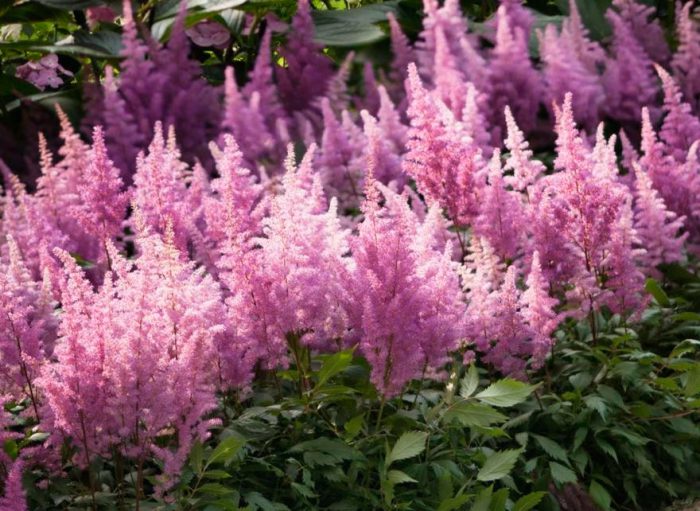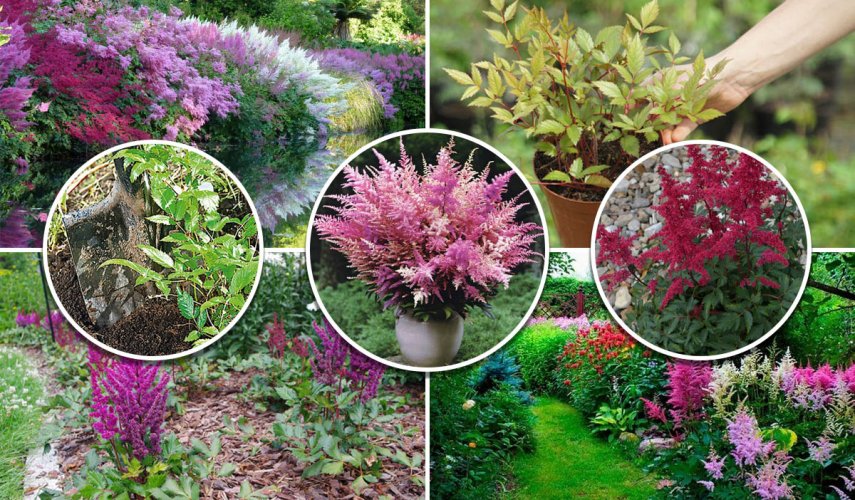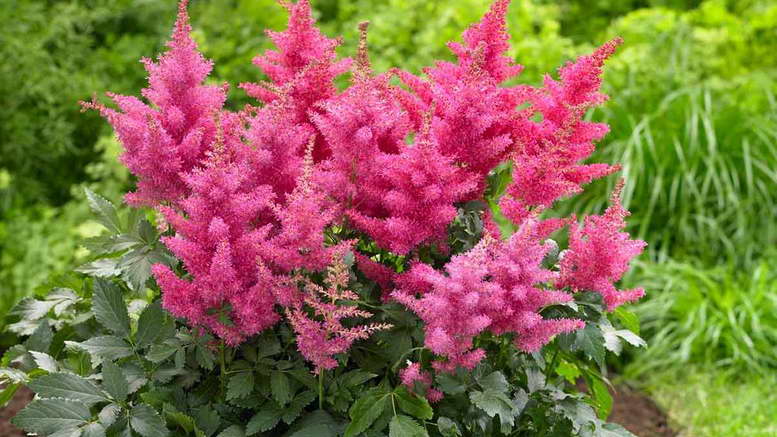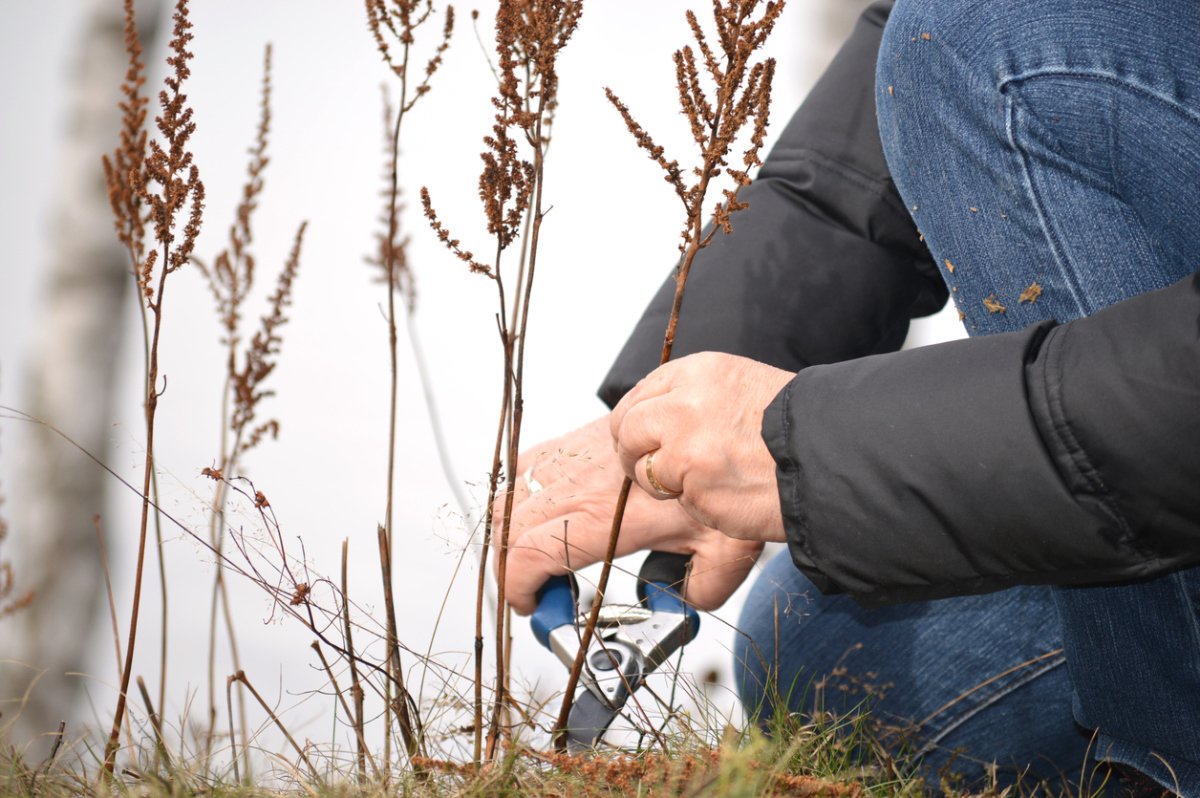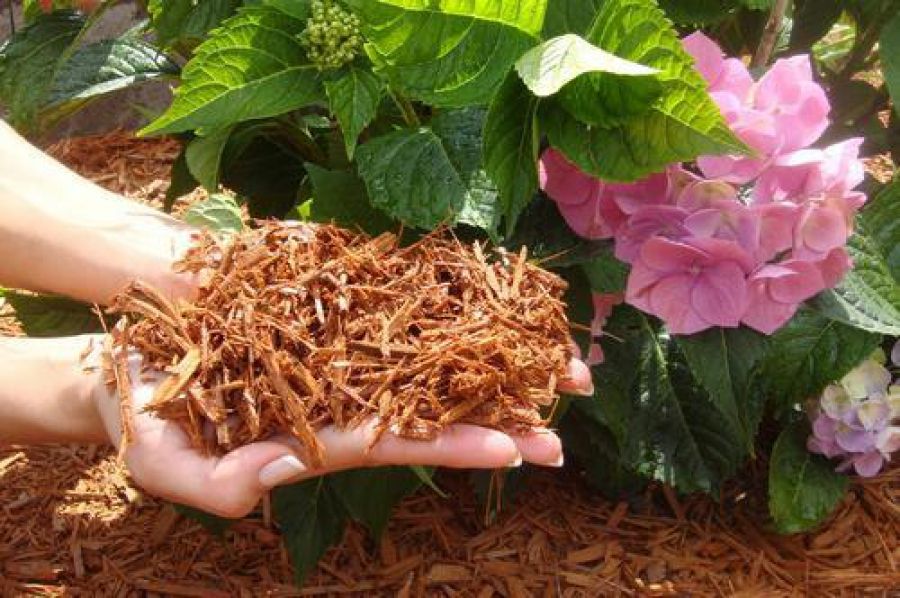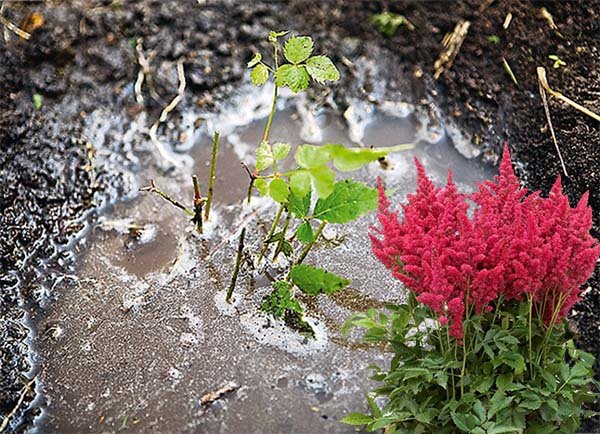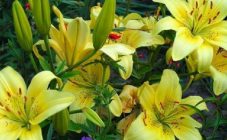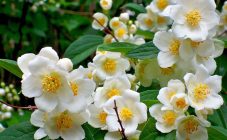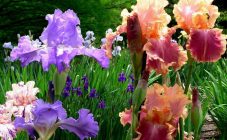Content:
The perennial ornamental plant astilba belongs to the family of Saxos. It blooms with colorful panicles, while having dark green or reddish openwork leaves. It looks quite exotic in a flower bed. The usual areas of its growth are East Asia, Japan and North America, wet river banks, forests. The decorative culture came to Europe in the 18th century and has been popular ever since. Although it is classified as a shrub, the ground part dies off completely in the winter season. Associated with this is the need - caring for astilba after flowering. The lower rhizome also dies off during the cold period, only on the upper part of the roots roots appear, as if growing up.
What year does astilba bloom
Astilba, its lush and long-lasting flowering, as well as its unpretentiousness, fascinated gardeners. As a decoration of any garden plot, the culture reaches a height of 15 cm to 2 meters, which is predetermined by the variety, of which more than 200 have been bred. Its name literally means "without shine."
For what year does astilba bloom after planting?
There are 3 ways to carry out this procedure:
- reproduction by kidneys;
- dividing the bush;
- seeds.
You can use a part of a bush with a root of 4 cm and 2-3 buds. Placed on the site in the fall, it will bloom the next season. Saplings rooted in holes for the winter with insulation or planted in early spring, sprout and soon (by August) form panicles.
Immediately after collecting the seeds, sowing can be carried out into the ground, providing shelter for the winter, as well as in containers, be sure to stratify and carefully care for, regular soil moisture. In the first case, a certain percentage of seedlings will appear in the spring. In the second, the seedlings are transferred to the ground by the beginning of June. Seedlings from harvested seeds usually do not retain the characteristics of the original plant. When buying seed in the store, you can wait for the buds a little later, but the growing process itself is very interesting.
How many astilba blooms
The flowering of fluffy panicles up to 60 cm in length is observed in summer. There are medium flowering varieties (July) and later. Plants of white and pink color can bloom in the sun, but the period itself is then shortened. How many astilbe blooms? Under normal conditions, flowering begins in early June and ends in late July. Fragrant "clouds" of various colors are very beautiful in shade and attract pollinating insects.
The duration of the decorative period (how long astilba can bloom) also depends on the variety:
- In Arendsa hybrids (height - up to 1.5 meters), it lasts 2 months or more, accompanied by a very pleasant smell. The color of the panicles is varied.
- Boogie-woogie has a slightly shorter period.
- The curb variety Lilliputa adorns the landscape and alpine hills from mid-July to the last days of August.
- The Japanese variety, even after flowering, is suitable for winter flower arrangements.
Therefore, astilba and its flowering period depend on a number of factors.Florists growing this culture mark this period as very long: from early summer to September for a number of varieties. To prolong the beauty, several varieties of flowers can be placed in the garden.
Astilba care after flowering
Astilba thrives in semi-shaded areas with constantly moist soil. She is intolerant to drought.
Favorable areas for better development - the banks of reservoirs, the shade of trees or the north side of the building. If astilba bushes grow in the garden, which has run out of flowering time, you should not stop watering it. Its roots sometimes grow vertically, spread over the surface and are in great need of moisture. In autumn there are also dry periods, then this is very important. Adequate hydration prolongs flowering and increases panicles.
Some, with the onset of autumn, stop caring for the garden and perennials growing there, they believe: it is enough to cut the stems from an unpretentious bush. Others completely in vain do not do this either.
Astilba faded, what to do next, in stages and variants:
- Flower panicles should not be cut off immediately after wilting as they can yield seeds. Half-dry inflorescences also look beautiful in the flower garden, until the end of the season.
- Before the onset of cold weather, you need to cut the stems of the plant to the level of the soil and mulch it in this place. This is especially necessary if astilba was planted by dividing the roots in the coming spring or early autumn.
- Trimmed panicles without seeds are to be burned. Although some use them for compositions. Ash is useful as fertilizer. It needs to be scattered over the soil.
- Astilba after flowering, what else to do? With the onset of autumn, the bush is divided, which makes it rejuvenated. During the winter season, the roots of the plant will harden to a woody state. Therefore, it is more difficult to do this in the spring.
- Perennial needs feeding.
Now in more detail about the procedure for reproduction of astilba by dividing the roots. When autumn comes, a bud of growth is left on each piece of the underground part. The planted plant will develop in spring and bloom with a significant number of panicles. You just need to mulch this area, and also cover it with spruce branches or straw for insulation from frost.
Although this crop is resistant to cold, at a young age it is at risk of disease. Some of the roots grow upward, as a result of which they can become exposed and freeze, especially if there is no snow, and the temperature is significantly lowered. It is possible not to prune and transplant the plant with the onset of the autumn season, transferring the procedure to spring. Care will then be limited to top dressing made under the bush.
When considering how to care for astilba after its flowering, some are interested in why permanent rejuvenation should be carried out. The culture does not grow in one place for over 5 years. You can try to leave it for a longer period. Then you will have to watch the plant wither. The flower will lose its brightness, abundance and splendor of panicles, the decorative period itself will be reduced.
So, what does autumn astilba need: pruning after flowering, dividing the bush and feeding. Moreover, in the late period, the second fertilization is carried out into the soil surrounding the plant. By this time, the panicles will not only have completely finished blooming, but the seeds in them will also ripen. Potash and phosphorus fertilizers are used in liquid form. In the spring, you can burn the stems this way.
After the feeding procedure, the soil is loosened and mulched. The soil between the bushes is covered with sawdust or peat. Needles are also suitable, which protects from frost. Pruning the stems takes place after feeding, when the first snow falls and the cold begins. Sometimes leaves appear on the cuts, dying by spring, yielding to the growth of shoots.So, the astilbe has faded, what to do now is clear.
Florist tips and tricks
Astilbe can be grown in rows, in groups, including a variety of flower colors: purple, white, almost burgundy, pink and lilac. It is also advisable to combine it with other plants, especially those that quickly fade. Low-growing varieties up to 25 cm are appropriate to plant on an alpine slide or curb.
Question: is it necessary to trim? There are gardeners who believe that dried stems trap snow, which creates a warm pillow, and the cover is also a source of moisture. The opinion that this should help the plant makes sense. But most flower growers consider pruning to be more useful, since in the absence of snow in winter, the roots can freeze slightly, and it will no longer be possible to cover them.
